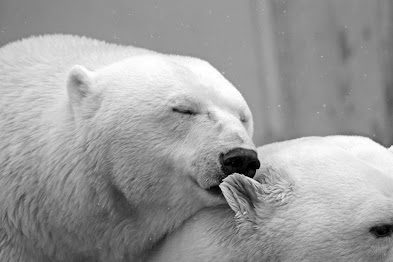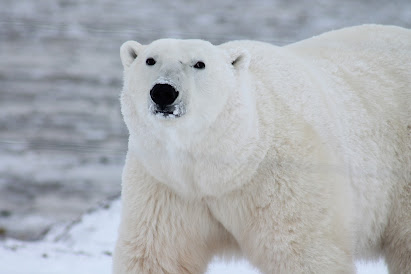INTRODUCTION
One of the most recognizable pictures of the Arctic is that of the polar bear (Urus Maritimes), known for its stunning white fur, massive height, and unique biological adaptations to one of the planet's most harsh environments. As apex predators, they are essential to the ecosystem of the Arctic.. However, polar bears are considered a fragile species and specific groups are in danger as a result of habitat destruction, warming temperatures, and other human-caused problems. The biology, habitat, challenges, conservation initiatives, and importance of polar bears within the larger framework of environmental health are all covered in this article.
Biological and Behavioral Features
Physical attributes
The biggest land predators are arctic bears, with mature males reaching an average of 900 to 1,600 pounds and females reaching an average of 350 to 640 pounds. They are protected from the bitter cold by a thick coating of blubber and a thick coat of fur. Though translucent and reflecting light that is seen, their fur gives the impression of being white, which aids in their ability to fit in with their winter environment.
ADAPTATION
Large claws that serve as paddles when swimming and aid in distributing their body weight on fragile ice are among the traits of polar bears. Their main food, seals, are detectable from a great distance thanks to their excellent capacity for scent. They hunt using a special technique known as "still-hunting," in which they await for pups to come out via breathing passages in the ice. They also have strong limbs for breaking through ice.
Polar bears usually need four to five years to attain sexual maturity. Mating begins in late spring, and following a gestation period of about eight months, females give birth to one to three cubs in a snow burrow, generally in the month of December or January. Bears weight around one pound at birth and are born blind and defenseless. For almost two decades, they live with their biological mother and pick up vital abilities for survival.
Range and Habitat
Arctic Environment
The circumpolar Northern areas of Alaska, Canada, Greenland, Norway, and Russia are home to polar bears. They depend on sea ice for hunting seals, which are their principal diet. Heat swings, varying ice trends, and shifts in sunshine are characteristics of the Arctic ecosystem.
Impact of climate change
Because of the loss of sea ice brought on by climate change, polar bears face the greatest threat. Since the late 1970s, the amount of Arctic sea ice has decreased by around 13% per ten years, according to the National Snow and Ice Data Centre. Because of their diminished capacity to hunt and procreate, polar bear populations have declined as a direct result of habitat degradation.
Lack of Ecosystem and Environmental ChangeLack of Ecosystem and Environmental Change
The Arctic is changing dramatically as a result of climate change. Polar bears must swim farther to acquire food since their hunting areas are reduced due to the melting sea ice. Hunger and reduced rates of cub survival are caused by increased utilization of energy and restricted availability to seals.
Lack of Ecosystem and Environmental Change
The Arctic is full with natural riches, but polar bear numbers are being threatened by growing interest in oil and gas extraction. Earthquake testing and the possibility of oil leaks are two extraction-related activities that might disturb polar bear habitats and the accessibility of food.
The pollutants & Toxicity
Persistent organic pollutants (POPs) and metals such as mercury are two types of pollution that can build up in the food web of the Arctic. Highly aggressive animals like polar bears are especially susceptible to these toxins, which can harm their immune systems and reproductive systems.
Human-Human Relations
The Arctic's rising human activity, such as transportation and travel, has the potential to disrupt the habitats of polar bears. Conflicts arising from human interactions can endanger bears as well as people
Because of their ability to serve as indicators of the general health of the Arctic environment, polar bears are regarded as indicator species. Their declining habitat is a harbinger of more significant ecological changes that might affect other species and ecosystems as well.
Cultural Importance
Polar bears are important to many Arctic Indigenous peoples on a cultural and spiritual level. They are important to conventional hunting techniques and are central to many cultural tales and beliefs.
Travel and Learning
Polar bears draw ecological tourism, which boosts local economies and raises interest in the effects of global warming on the community. Polar bear-themed lessons have the potential to spur worldwide initiatives to protect them.
Conclusion







0 Comments